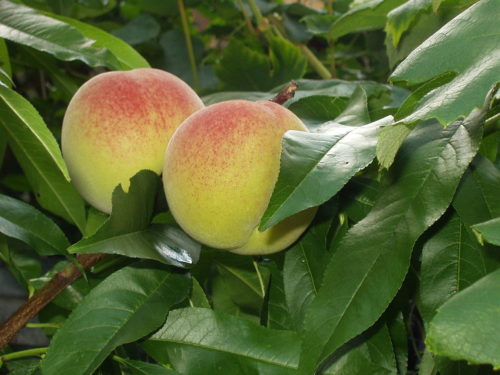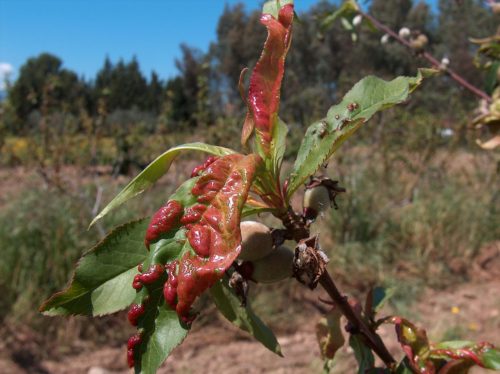Peach, name of both the tree and the fruit. With its firm pit, the peach belongs to the stone fruits (apricot, plum, cherry).
You are viewing the mobile-adapted version of the page.
The one for tablets, laptop and desktop also provides general information, such as origin and cultivation.
Peach – (Prunus persica), name of both the tree and the fruit. With its firm pit, the peach belongs to the stone fruits or drupes (apricot, plum, cherry). The origin of the peach is in China; the tree and fruit came to Europe via Persia. Peaches are grown in the countries around the Mediterranean Sea.
Nectarines are peaches with smooth skin; that of the peach is somewhat felty.
Although peaches are native to warmer climates, many varieties grow well in the UK provided they are in a warm, sunny, sheltered, south- or south-west facing position. Because peaches bloom as early as April, the risk of damage from night frost is high. Flowering and later fruit setting can be profuse, making thinning of the fruit (only a few peaches per branch) necessary for a good harvest.
Annual fertilization keeps the tree healthy.
Pruning during flowering. Excess new shoots in summer can be removed in June.
The peach is very susceptible to Peach leaf curl.
Bugs
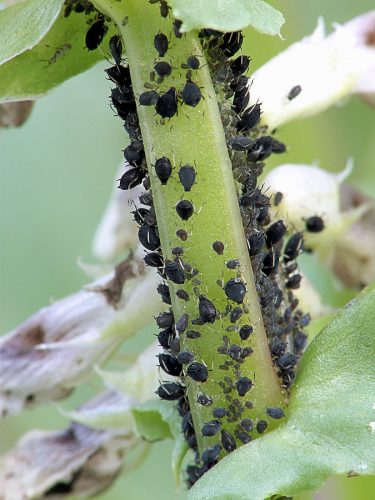
Deformed leaves: aphid, black bean aphid (Aphis fabae).
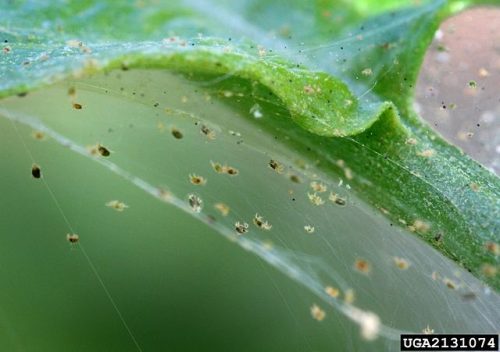
Dot-shaped spots on the leaves, mites on the underside: red spider mite (Tetranychus urticae).
Other
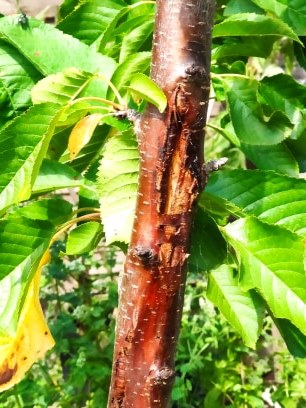
Trees affected by leaf curl
Fruits remain small and do not ripen: after abundant flowering, there are excess fruits.

